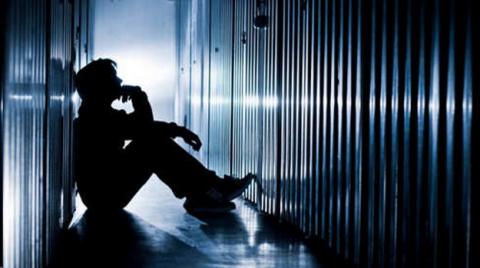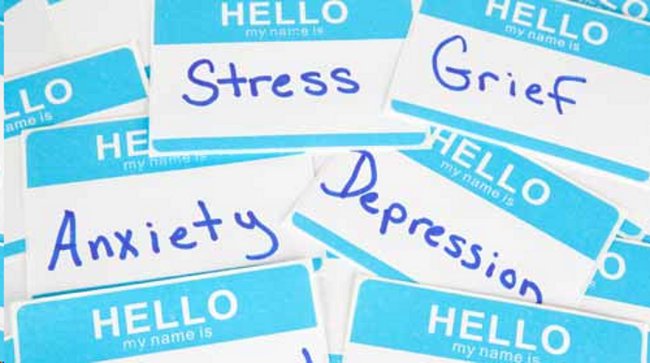Treating the Cause (not the Symptom) of Mental Illness

From our content partner New America Media:
Mental health underlies many of the issues at the forefront of our national consciousness. Police brutality, gun violence, mass incarceration – the conversation always comes back to mental health. And accordingly, the mental health care system has undergone significant improvements in recent years, most notably with the Affordable Care Act, which has expanded access to coverage for mental health services.
But when it comes to young people, service providers who work with some of the youth most vulnerable to mental health issues are finding that their clients’ most significant social and emotional issues are ones that aren’t necessarily treated with traditional mental health care like therapy and medication. These youth include young people involved in the child welfare and juvenile justice systems, as well as ones who deal with housing instability.
The work of these service providers raises a question: In all our focus on improving the mental health care system, are we missing something?
Rob Gitin, the co-founder and executive director of At The Crossroads, an outreach organization that works with unstably housed youth in San Francisco, says “Perhaps the biggest deficit in our clients’ lives is a lack of two things – it’s a lack of community and it’s a lack of self-esteem.”
While policymakers and government officials acknowledge the importance of mental health – the Surgeon General has named it one of his top six priorities – less attention has been paid to the root causes of poor mental health and to creating safe, supportive, and well-resourced neighborhoods and communities for people to live in. Mental health problems often start with difficulties in childhood, and if the work of youth service providers shows anything, it’s that addressing this will require expanding the current notion of what young people need in order to have good mental health.
According to Margot Gibney, the founding executive director of Youth Treatment and Education Center in San Francisco (a center for juvenile drug offenders), effectively treating kids who are marginalized is not rocket science, because all kids essentially need the same things – the support of a family, the opportunities that come with education, and the safety of a stable place to live.
“When people refer to ‘these kids’ – there are no ‘these kids.’ There are young people. And young people all have fundamentally the same needs,” she says. “Whatever any middle-class parent would want and provide for their children is exactly what young people that are facing all these challenges need, plus to have their trauma addressed.”
Former foster youth: Stability comes with social ties
Liberty Dycus, 24, was born in Ethiopia and adopted when she was very young by a family in Contra Costa County in the San Francisco Bay Area. She was later removed from her adoptive home because of abuse, after which she entered foster care.
She says her foster mother “did the best she could,” but that she had other foster kids as well as kids of her own. Dycus did receive therapy, but says, “The thing about therapy in foster care is when you go home you’re still in the same situation. I still have to go home and I still have to live everything that’s happening.”
After she emancipated, she felt lost. She moved through different living situations and struggled with depression. She ended up at a youth shelter in Richmond, Calif., and then got into transitional housing. She had to leave transitional housing after two years, and until recently, she dealt with homelessness and was moving between friends’ houses. It was difficult to find an apartment in the Bay Area she could afford while still being able to keep her car and buy food. “To not know where you’re going to sleep at night, it’s not a good feeling,” she says.
She’s working and is doing her best to make ends meet. “When I left transitional housing, I thought I might have some support,” she says. “But everybody saw that I had a job, so it seemed like they thought, ‘Oh, she won’t need help.’ Sometimes I wish I weren’t working full time, but I’m trying to do the right thing.”
“When you’re strong, people don’t notice you. When you appear to be okay, people don’t ask; they just expect you to have it together,” she says. “You don’t want your struggle to define you, but sometimes you need to express what’s happening in your life.”
In recent years, foster care in California has undergone policy shifts meant to help kids in the system lead healthy lives. The Katie A. v. Bonta class action lawsuit, which was settled in 2011, led California’s Department of Social Services and the Department of Health Care Services to make significant changes in the way mental health care is made available to foster youth. Since 2012, Assembly Bill 12 has allowed kids to remain in the foster system until age 21. Implementation of Assembly Bill 403, Continuum of Care Reform, began this year; it will prioritize keeping kids in family settings as opposed to group homes, and provide for those families to get specialized mental health training.
Change happens slowly, though, and the system works better for some youth than others. Eric Wagoner, who like Dycus grew up in Contra Costa County, entered the foster system after being removed from his mother’s care. Now 21, he says that AB 12 was instrumental in helping him become self-sufficient as he was transitioning to adulthood.
But he says that he and a lot of other youth run into a common problem – if you want to see a therapist, it’s tough to find one who accepts Medi-Cal (which, under the Affordable Care Act, covers former foster youth until age 26). “We need to find a way to streamline the way that youth are accessing mental health services,” he says.
For Wagoner, what ended up being a key factor in his personal growth and recovery were his social ties. Many of those ties have been the result of coming into contact with California Youth Connection, a nonprofit foster youth-led development organization that advocates for kids in the system.
“Former foster youth are a small demographic and we can be isolated,” says Wagoner. “We don’t have a ton of other youth to connect with. CYC helps to bridge that issue by bringing people together.”

He says he felt supported by the other current and former foster youth, and that he learned how to speak up. “You can receive support through therapy, but the foster youth population is a specific population, and [people I met through CYC] truly understand what you may have faced,” he says.
A three-year study conducted in Washington State by Mathematica Policy Research and Community Science sought to quantify to what extent investing in community-based initiatives and networks (organizations similar to CYC) can prevent and mitigate the effects of difficult childhood experiences among individuals in those communities. The study, which began in 2013, released results in August 2016 finding that the statewide initiative (known as the Adverse Childhood Experiences Public-Private Initiative) had been able to make statistically significant improvements in a set of health and development outcomes for people who had experienced things like child abuse and neglect, domestic violence, and the mental illness of a parent.
For example, one of the projects that was funded, the Positive Social Norms Campaign in Okanogan, was able to show a 10-point decrease in youth alcohol use among the high school students it worked with over the course of the study.
The initiative’s goal, broadly, was to strengthen connections between people on the ground as a way of preventing and healing the effects of difficult childhood experiences in their communities. The study’s evaluators found that organizations that intervene at the community level can be measurably effective when given adequate resources.
For Wagoner’s part, he’s now doing the kind of community work that contributed to his own healing, working as a youth partner with Contra Costa County.
Youth in the juvenile justice system: Combating stigma with education
Attorney Nisha Ajmani, who manages the sentencing service program with the San Francisco-based Center on Juvenile and Criminal Justice and works with young people in the juvenile justice system, says that a history of difficult childhood experiences is the norm for young people in detention.
“Even if a kid doesn’t have a mental health disorder or a diagnosis, most of these kids have experienced a traumatic event in their lives, whether it’s exposure to community violence or domestic violence, or being abused or neglected, or living in poverty,” she says.
Being in detention can re-traumatize young people, says Ajmani, and people familiar with the juvenile justice system tend to agree that it’s difficult to deliver effective mental health treatment in a detention environment.
Andrea Appleton, 24, is one young person who ended up in juvenile detention following traumatic experiences. She grew up in subsidized housing in the Western Addition, a historically low-income African American neighborhood in San Francisco, and lost a brother to gun violence when she was 11. She and her brother had been very close, and his death was a turning point in her life. Heading into her teens, it became more and more difficult for her to get along with her mother. She struggled with homelessness and ended up spending time in juvenile hall in San Francisco and in Solano County, her stays ranging from a few weeks to several months at a time.
Though she says that being incarcerated was difficult, she also says that juvenile hall was one of the few stable places she’d lived. “It was good for me to stay there,” she says. “I was in a safe environment.”
Today, she’s living with a friend and still needs to finish high school. While she didn’t like the schools she attended while she was in juvenile hall – known as “court schools” in California – she says her existing high school credits are mostly the ones she earned in detention. She has two children of her own now and is struggling, but is determined to do what she has to do to move forward, including finishing high school.
Detention may not be the optimal place to address a young person’s mental health needs, but it can be a place to provide them with the opportunities they need in order to lead healthy lives later on – namely, by getting their education on track.
For youth who have been incarcerated, “There is no clearer passport to rehabilitation than being a college student and having a college degree,” says attorney Jennifer Rodriguez, the executive director of the San Francisco-based Youth Law Center. Rodriguez herself spent time in detention when she was a kid. But, she says, “The moment that I had my law degree, nobody cared about my juvenile arrest record.” A college degree was the clean slate that she needed – it provided her with the opportunity to do what she wanted to do with her life.
Read the rest here.
Author Bio:
Anna Challet’s reporting on mental health and youth in the system was undertaken as a California Health Journalism Fellow at the Center for Health Journalism at the University of Southern California's Annenberg School of Journalism.




























































































































































































































































































































